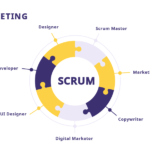Are your projects meeting deadlines? Are your teams suffering from burnout due to unbalanced resource allocation? Are your projects getting delayed due to the constant changes in scope and requirements?
These are the warning signs of project failures.
Every project is a pulse of your business growth. Don’t let inefficient workflows sink your projects.
According to a PMI report, organizations with high-performing project teams save 27% more money in operating costs. They also enjoy better business outcomes with consistent delivery of successful projects. And one of the key contributing factors to project success is the use of project management software.
That’s why leading organizations are investing in project management solutions to help teams collaborate effectively. Some of the top investment priorities are cloud computing, integrations, cloud security, the Internet of Things, and automation.
Understanding the technologies that revolutionize the way teams work is the first important step towards adopting the best solution for your teams.
For a better understanding of the impact of technology on project management performance, keep on reading.
How Does Technology Affect Project Management?
1. Cloud Computing
Cloud computing is defined by Microsoft as the transmission of cloud services, from software and databases to analytics and intelligence.
What is all the buzz about the cloud, and why are companies jumping on board?
One reason is because it lets employees stay connected to each other and the company network seamlessly. This way, they can collaborate even when they are in the field or geographically dispersed. Cloud-based platforms also enable information accessibility anytime and anywhere.
A cloud-based project management tool enables cross-functional teams to collaborate virtually and physically, track real-time progress, and access the information they need directly from a shared platform.
2. Integrations
The average medium or large business is likely using somewhere between 300 and 400 apps. Some of those the IT department did not even deploy officially, according to an article by ZDNet. This makes an enterprise highly vulnerable to digital threats because of the wide surface of attacks. This is something that we will tackle in the next number.
Meanwhile, a large number of apps means that there is a lot of data being produced. Employees may need information from one solution to process it on another. Traditionally, people would do this by copying data on paper and re-entering it into another system. But this could result in errors and, since that process takes time, the data could have changed in the period it took to copy and enter information.
That is something that can be resolved by integration.
Software integration is the combination or grouping of software components or whole programs to enhance the functionalities of one or the other. It is typically done to streamline the data exchange between different platforms.
Integration allows different solutions to ‘talk’ with each other. This can happen automatically and regularly depending on your configurations or it can occur ad-hoc. Either way, it streamlines the delivery of data so there is no need for manual transmission. As a result, data is pristine and errors are not likely to occur.
How can this help project management?
Integration enables organizations to connect data sets to generate new insights. With the data visualization capabilities offered by modern project management software, organizations can monitor, analyze, and report on project success. For example, Jira offers third-party app installation like the WBS Gantt-Chart to help PMPs visualize the project timeline, task dependencies, and milestones on a Gantt chart.
Read more: A Project Manager’s Guide to Integrating Jira and Microsoft Project
3. Cloud Security
Cloud-hosted applications are risky because they have sensitive data related to projects, clients, employees, and the company.
To protect your project and your stakeholders, you need an enterprise-grade security application that can cover every surface. With the right choice, you can rest assured that whatever information you have in your system regarding your project is not leaked or manipulated.
While operating with maximum security, you can ensure that the workflow proceeds smoothly. Because one error in data processing can affect project outcomes, bottlenecks can occur while trying to fix security issues. So instead of mitigation, you can take preventative action to stop attacks before they happen.
4. Internet of Things (IoT)
If you are unfamiliar with the Internet of Things (IoT), Forbes offers a succinct definition: It refers to the connection of devices to the Internet, which can be manipulated over the air. Examples include wearable devices, smart refrigerators, smart ovens, security cameras, thermostats, and more.
Projects that require physical equipment can greatly benefit from this, as it lets them control devices remotely. This also means not having to go to the field to collect data. This is a great way to monitor equipment, too.
In any case, IoT allows project teams and their managers to work with a steady stream of data and to make real-time decisions. On top of that, this enables organizations to know when equipment needs maintenance, repair, or upgrade because it will show in the stats immediately. Thus, they can avoid further problems by addressing them at the onset.
5. Automation
At the ground level, automation is the relegation of repetitive tasks to machines or a set of algorithms.
Project management has five basic phases that the best project management software can help you with; initiation, planning, execution, monitoring, and closure. In each of these steps, there are bound to be tasks that can be repetitive, such as data entry, or time-consuming ones, like data analysis.
With automation, these tasks can be done with little or no human intervention. Thus, team members can focus on things that truly matter. This is the most popular use case for project management software.
Revolutionizing Project Management
Project management software by itself can only do so much. At the end of the day, success using such tools still lies with the users. To maximize your organization’s project management investment, start by charting the project management frameworks that work for your team.
To facilitate adoption, be sure to provide training on the new software. This will help you overcome change resistance and help users discover the benefits of using new software tools that make their jobs easier and more productive.

